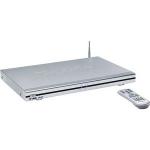 Similarly to the Amphony iFinity wireless audio system, the Sonos wireless music system can stream music wirelessly throughout a home. It can do so either by using LAN cables or wirelessly. Most people will probably use the wireless option. While the Sonos system is quite a bit more expensive than the Amphony wireless kit, it does have some features which are fairly interesting. One of those features is the way the wireless signal is sent by the Sonos zone player. In this article I will look at the Sonos mesh architecture in a bit more detail.
Similarly to the Amphony iFinity wireless audio system, the Sonos wireless music system can stream music wirelessly throughout a home. It can do so either by using LAN cables or wirelessly. Most people will probably use the wireless option. While the Sonos system is quite a bit more expensive than the Amphony wireless kit, it does have some features which are fairly interesting. One of those features is the way the wireless signal is sent by the Sonos zone player. In this article I will look at the Sonos mesh architecture in a bit more detail.
When you want to transmit music with the Sonos system, you’ll need to get a zone player which acts as the gateway to the internet and also as the transmitter similar to the iFinity wireless transmitter. The wireless signal most likely has to traverse walls and partitions in order to get to the receiving zone player. Due to the nature of wireless transmission, the signal gets weaker each time is passes through a wall. If the number of walls between the two zone players is too large, the signal may not be able to reach the intended receiving zone player.
However, Sonos’ mesh technology is able to route the wireless signal through other zone players. Let’s say the distance between the primary transmitting zone player and the receiving zone player is too large for the signal to be transmitted. Let’s say there are other zone players in your house somewhere in between these two zone players. In this case it is likely that the other zone players can act as repeaters and thereby effectively increase the operating range. There may even be cases where the signal has to pass through a series of zone players before it reaches its final destination.
As an alternative, you can also install zone bridges. These devices are dedicated repeaters and can extend the operating range similarly. Be sure to place the zone bridge somewhere in between the primary zone player and the zone player which is farthest away from the transmitter.


